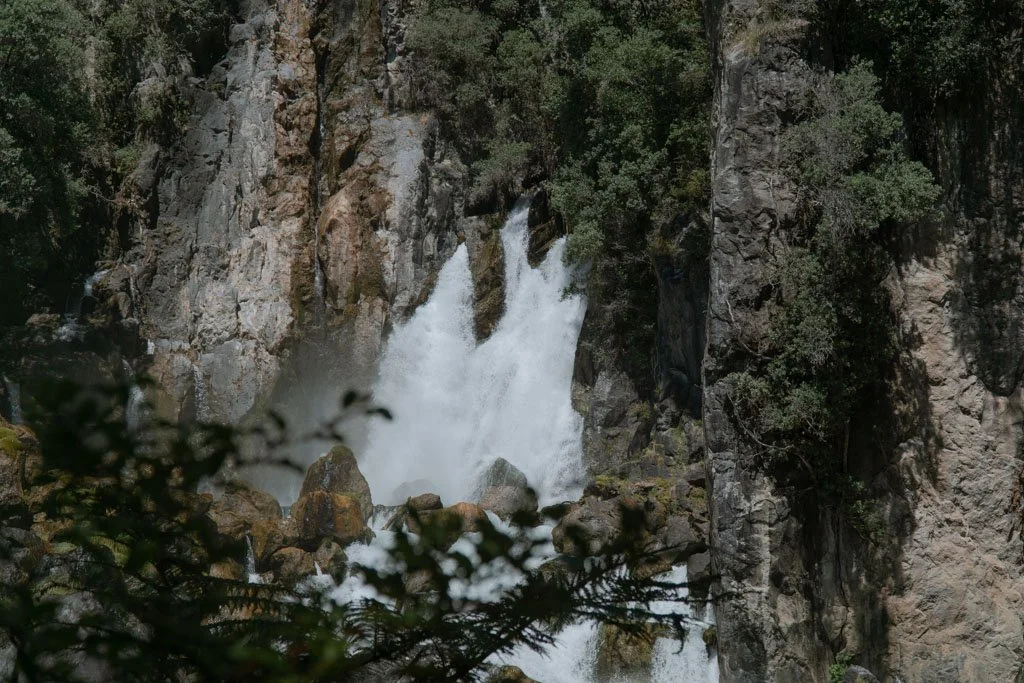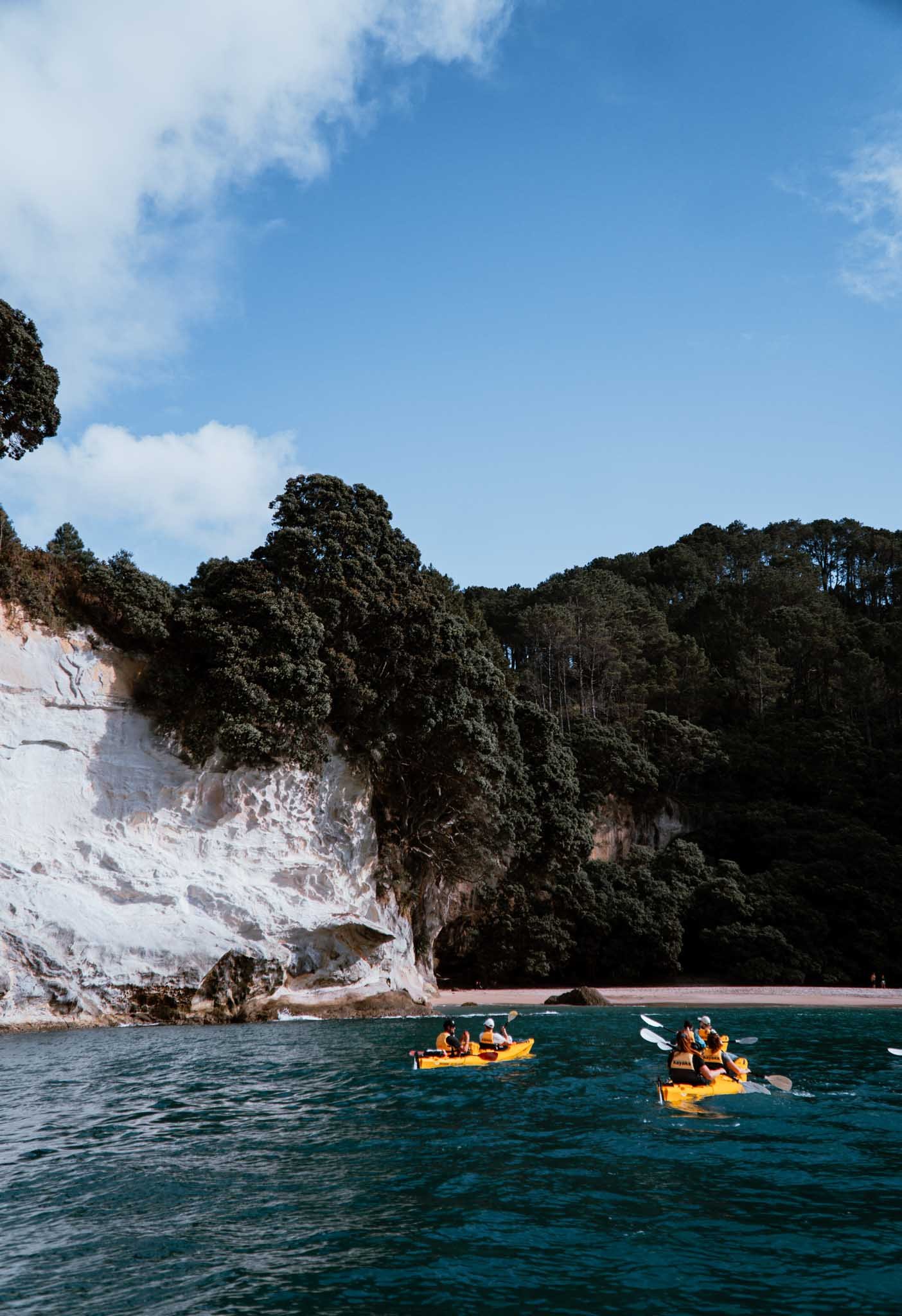A local’s guide to the best things to see and do in Rotorua
Rotorua is New Zealand’s geothermal hotspot, and the place I have ended up calling home.
The orange and turquoise champagne pool at Wai O Tapu is one of Rotorua’s most iconic sights
Disclosure: This post contains affiliate links, which means I may earn a small commission if you book through those links. I appreciate your support!
I moved to Rotorua for love, and I want to be clear it was not for love of the town.
Rotorua’s town centre feels like many small towns in New Zealand – traffic during the day, dead quiet at night. But Rotorua is even shabbier around the edges than other urban centres around the country.
Vape shops or fried chicken joints sit on most corners. Storefront signs are often broken or missing. The corrosive, sulphurous air sends everything faster into a state of deterioration and decay.
Rotorua centre
It’s an odd state of affairs for New Zealand’s original tourist town.
The simmering geothermal activity in the area has been drawing visitors since the 1800s, when travellers made the trek to see the fabled Pink and White terraces. The pastel-coloured silica terraces once tumbled down a hillside, creating a visual extravaganza of pools and waterfalls flowing with mineral-rich thermal waters.
Artist John Hoyte’s watercolour rendition of the terraces; circa 1875
Unfortunately, a massive eruption in 1886 decimated the terraces.
The Pink and White terraces are now (probably) buried under Lake Rotomahana (the hunt for them is ongoing) but you can still see other evidence of the active geothermal activity that makes Rotorua distinct.
There must be few towns in the world that reek of sulphur the way Rotorua does, or that have scalding steam surging from storm drains.
I have put together this guide as my attempt to steer you to the best things to do in Rotorua, that aren’t overwhelmingly touristy, overpriced, or generally manufactured to make the most of the tourist dollars flowing through town.
As with all of my guides, this isn’t an exhaustive list, but the things I enjoy the most in Rotorua, as someone who lives here.
Kuirau Park, in the centre of Rotorua, is free to walk around and features steaming pools and even thermal foot baths
WHY GO?
Rotorua isn’t the most naturally beautiful part of New Zealand, but the geothermal activity here has been drawing tourists in since tourism was a thing.
HOW LONG DO YOU NEED IN ROTORUA?
Two nights is usually enough — that’s enough time to visit one geothermal park and soak in some hot pools, with another adventure activity thrown in.
If you have more time, three nights gives you more time to explore the wider area.
GETTING THERE AND AWAY:
Rotorua is usually the first stop for people arriving into the North Island — it’s a 3 hour drive south of Auckland, so you can either head straight here from Auckland international airport, or spend a night or two in Auckland before heading down.
If you’re short on time, Rotorua does have an airport that will connect you to Christchurch in the South Island, or back to Auckland (but it’s a short enough distance to drive).
MY TOP THREE PICKS FOR ROTORUA:
Orakei Korako is my favourite geothermal park. It’s a little bit of a hike from Rotorua town, but it’s the quietest option and the only one to have naturally occurring geysers (I was lucky enough to see one go off).
Hot pools — my favourites are the ‘wild’ ones (see if you can find Lake Tarawera’s secret spot) or the more rustic ones, like Waitangi Soda Springs or Lake Rotoiti hot springs which you can reach via kayak.
Lake Tarawera Falls — you’ll need water transport across the lake, but it’s such a nice walk and the lake and nearby Mount Tarawera make for awesome views.
WHERE TO STAY:
Staying close to the centre of town means you’ll be handy to places to eat, but if you don’t mind self-catering, I would actually recommend staying further out.
The town of Rotorua really isn’t anything special, so you won’t miss anything if you don’t mind self catering.
FEATURED STAY
Blue Lake Top 10 Holiday Park
It’s nothing fancy, but it’s hard to beat the location of these simple cabins, right on the edge of the pretty Blue Lake (great for swimming) only 10 minutes from Rotorua.
See geothermal activity in Rotorua
Walking to Sulphur Point on Rotorua’s lakefront, at sunrise
Steam rising in the early morning sunrise, right on the lakefront in Rotorua
Visitors have been flocking to Rotorua’s thermal waters and volcanic wonders since the 1870s. Back then, many came to see the Pink and White terraces of silica deposits, which were destroyed in the 1886 Mt Tarawera eruption.
The fabled terraces may be gone, but there are still plenty of natural wonders luring visitors to Rotorua.
Your first introduction to New Zealand’s most dynamic thermal area is likely to be a whiff of sulphur-rich air as you drive into town. Rotorua is built right on top of a geothermal system which sends steam up through storm drains, and makes mud pools bubble in public parks. One of the main reasons to visit Rotorua is to see a geyser, a colourful pool of acid, or steaming cliffs.
Each of the geothermal parks in Rotorua offers something slightly different; whether that is combining the geothermal sights with hangi food cooked in the ground, a mud bath, or a soak in soothing hot waters.
Unless you’re very enthusiastic about geothermal areas, you only need to visit one of the parks. A walk around a geothermal park, combined with a visit to one of the free geothermal attractions, and one of the thermal springs in the area, is enough to experience the .
Rotorua’s hot springs
All the geothermal activity beneath the surface means Rotorua has an abundance of hot springs. These range from hot rivers, lakefront hot pools, and rustic pools where the water is straight from the ground.
Skip the Secret Spot hot tubs (which are heated with electricity, instead of being fed with geothermal water) and soak in one of the area’s many naturally thermal pools.
Polynesian Spa
In terms of convenience, it’s hard to beat the Polynesian Spa, which is located on the lakefront right in the centre of Rotorua.
There are several pool options to choose from; the Pavilion Pools have a standard swimming pool aesthetic, but nice lake views. The Deluxe Lake Spa has pools that are fringed with rocks, to make them appear more in tune with the natural environment, as well as towels, lockers, and a cold plunge pool, but the views are the same.
Ostensibly, some pools are alkaline and others acidic, but the only discernible difference for me was the variations in temperature.
With slightly dated facilities, the Polynesian Spa isn’t going to be the most luxurious thermal pool experience, but you can’t complain too much about soaking in hot water lakeside.
Waikite Valley
These open air pools are a 30 minute drive south of Rotorua (but only 10 minutes from other attractions nearby, such as Wai O Tapu and Waimangu Valley) but they are worth the trek.
The hot pools are fed by the impressive Te Manaroa Spring, the largest single source of boiling water in New Zealand. Follow a short trail from the hot pool complex to see the roiling waters of the spring for yourself. Water from Te Manaroa flows continuously through the pools, with the only modification being to cool the water to different temperatures. Highlights are the Pergola and Garden pools, both surrounded by lush foliage and offering views of the valley beyond.
These pools are rarely busy and offer excellent value for money. There’s even a campground if you’d like to stay overnight and have exclusive access to the pools, before the rest of the public, first thing in the morning.
Rotorua’s free hot pools
Located around 30 minutes south of Rotorua, off the highway heading to Taupo, is Kerosene Creek. The hot stream is Rotorua’s most well-known spot for bathing in thermal water for free, but it’s far from the prettiest. To reach the stream, you’ll need to bump and rattle 2 kilometres down a potholed gravel road and park in an area known for vehicle break-ins (lock your car and keep valuables out of sight).
A short trail leads to the creek, through pine forest and bramble thickets. The path can be muddy and rubbish is not uncommon. If you make it past all of these obstacles, you’ll be rewarded with a soak in a pleasantly warm stream, which features several deeper pools and even a small waterfall. For a quieter pool, explore the areas a little upstream of the waterfall, which is where most people swim.
I prefer bathing in Hot and Cold, another hot stream a further 10 minutes south (right next to the Wai O Tapu geothermal area). Despite the fact these hot pools are more or less under a road bridge, and there is a sign warning that there could be syringes, condoms, and broken glass in the water, the water at Hot and Cold is much clearer than the brackish stream at Kerosene Creek, and feels hotter as well .
Most people like to sit at the confluence of the hot stream with a cold stream (hence the name) so you can alternate temperatures, but I prefer wading upstream to the quieter pools which have been deepened with unobtrusive rock landscaping.
A left field recommendation: Wingspan, the surprising activity I loved the most in Rotorua
The Wingspan Bird of Prey centre is dedicated to the protection of New Zealand’s birds of prey.
We have one endemic falcon, a small bird that loves to hop around on the ground, despite being a fantastic flier — New Zealand’s birds are beautiful, but many years of isolation made them evolve in some not-so-smart ways. Their ground-dwelling habits means they are now endangered, with far fewer left than the kiwi.
If you have the time, go and check out the Flight of the Falcon, a one hour demonstration from 11.30am, every day except Monday.
Walks and hikes in Rotorua
Tarawera Falls is the coolest track near Rotorua — but it’s a challenge to get to
At Tarawera Falls, an underground river pours right out of the cliff face
The Tarawera Trail is an awesome day out
The Tarawera Trail is 15 kilometres one way, so it’s a full day out. The trail starts with beautiful views of Lake Tarawera, and passes by quiet lakeside bays, through native bush, and travels up to a fabulous lookout point before arriving at Hot Water Beach.
You can go for a swim at the natural hot pools on the edge of the lake before catching a farry back to the carpark.
Thanks for reading this far! I hope this helped you choose what to do in Rotorua.
AUTHOR BIO
I’m a freelance travel writer from New Zealand with bylines in National Geographic Travel, Conde Nast Traveler, Travel + Leisure and more.
I’ve travelled up and down beautiful Aotearoa and I love sharing my recommendations for the best places to visit in New Zealand.
This post was about:
READ MORE










